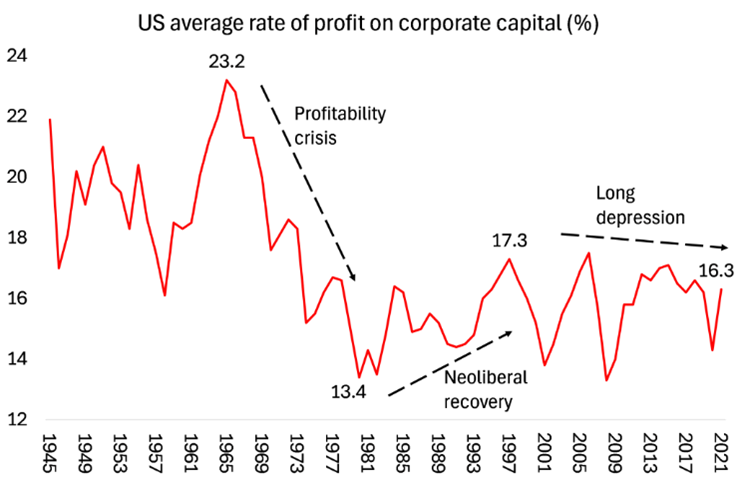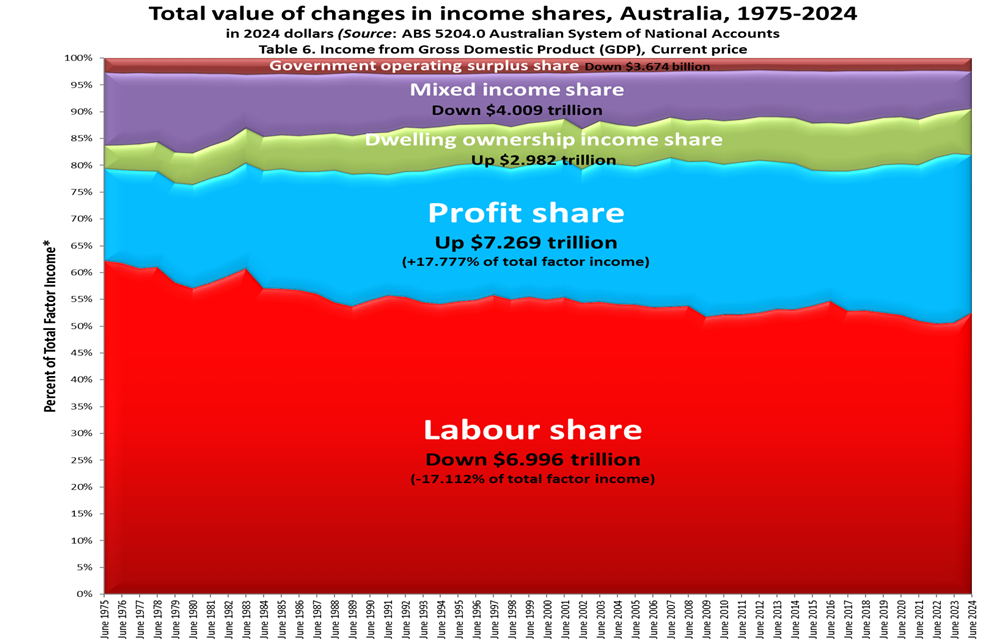
The world has just witnessed more than a dozen billionaires prominently seated at United States President Donald Trump’s second inauguration.
Among them were four of the world’s five richest men: Elon Musk; Jeff Bezos; Mark Zuckerberg and Bernard Arnault. Each has interests they count on the new Trump administration to advance.
Musk, who spent a quarter of a billion dollars getting Trump elected, has already seen a massive 77% rise in the stock market valuation of his companies, which include Tesla, SpaceX and X.
Apart from the tech and media oligarchs, other big billionaire beneficiaries of the Trump administration include the 15 biggest fossil fuel billionaires in the US, whose combined wealth has already increased by US$17 billion since the beginning of the year, according to the Climate Accountability Research Project.
While not all US billionaires supported Trump’s election, more are swinging to his side, just as governments that serve capitalist interests — including Australia’s Labor government — are now cosying up to the second Trump administration.
Since the election, the financial press across the world began to publish stories that support Trump’s boast that he will deliver a new “golden age” for the US.
Marxist economist Michael Roberts writes that the narrative is that “the US economy is bounding forward in terms of economic growth, hi-tech investment and productivity, leaving the rest of the world behind”.
“This success,” Roberts explained in The Next Recession, “is put down to less regulation, an entrepreneurial spirit, lower taxes on investment, etc — in other words, none of this government interference that Europe, Japan and other advanced capitalist economies suffer”.
Apart from a booming stock market and a high US dollar, the key evidence put forward for this view is higher US gross domestic product (GDP) growth and productivity.
The Economist magazine boasted in a feature report in October that, in 1990, the US “accounted for about two-fifths of the overall GDP of the G7 group of advanced countries; today it is up to about half”. It said that since the start of 2020, the US’ “real growth has been 10%, three times the average for the rest of the G7 countries”.
However, the same article had to admit that US GDP has shrunk from 21% of global GDP in 1990 to 16% in 2023 — mainly because of China and India’s faster growth.![]()
Roberts noted that the US economy appears stronger than other G7 countries only because of the economic stagnation in Europe and Japan.
“Yes, compared to Europe and the rest of the advanced capitalist economies (of course, not compared to China or India), the US is doing much better. But that’s because Europe, Japan, Canada are stagnating and even in outright recession. In historic terms, the US economy is doing worse than in the 2010s and worse again compared to the 2000s.”
Productivity growth slowing
If you look back further, the heralded new US “golden age” looks even less impressive.
“Average annual real GDP growth in the US has declined from the 4% rate in the post-war ‘Golden Age’ to 3% a year before the Great Recession and under 2% in the period since then ... And current consensus forecasts for US growth in 2025 are just 1.9%. But that would still be the fastest of any G7 economy,” according to Roberts.
According to the Economist, the new “golden age” narrative is because of greater productivity in the US.
“This year the average American worker will generate about $171,000 in economic output, compared with (on purchasing-parity terms) $120,000 in the Euro area, $118,000 in Britain and $96,000 in Japan. That represents a 70% increase in labour productivity in America since 1990, well ahead of the increases elsewhere: 29% in Europe, 46% in Britain and 25% in Japan.”
But, according to Roberts, this hides the fact that, from about 2010, productivity growth in the US has been slowing. US productivity growth is half what it was in the 1990s and a third of what it was in the 1950s and 1960s.
Productivity growth in the major economies has slowed across the board because productive investment growth — driven by profitability under capitalism — has dropped.
“The neo-liberal attempt to raise profitability after the profitability crisis of the 1970s was only partially successful and came to an end as the new century began,” explained Roberts.
“The stagnation and ‘long depression’ of the 21st century is exhibited in rising private and public debt as governments and corporations try to overcome stagnant and low profitability by increasing borrowing.”
us_rate_of_profit.png

Under relatively free market conditions, businesses that bring in labour-saving new technology make higher-than-average profits, but only until that new technology is generalised or overtaken.
Businesses that can monopolise new technology can enjoy such super profits for longer. Over the last four and a half decades of neoliberalism, there has been a constant process of corporate mergers, a process of centralisation of capital that has spawned the billionaire class of today.
This process of capital concentration has been funded by massive borrowing, according to Roberts. The US corporate debt-to-earnings ratio remains near all-time highs.
US corporate bankruptcies last year surpassed 2020 pandemic levels.
The booming US stock market, which is driving world markets, is being mainly lifted by just seven stocks (the so-called Magnificent Seven): Apple, Microsoft, Google’s parent company Alphabet, Amazon, Nvidia, Meta Platforms and Tesla.
For the majority of US companies outside the burgeoning energy sector, social media and tech, things are not going so well.
The giant corporations they own and control forge close links with the capitalist state to ensure that they benefit from growing subsidies, tax concessions and other favourable treatment.
Under neoliberalism, the billionaire class has intensified its exploitation of most workers. It is even making life more difficult for white-collar workers and small business owners — who have long considered themselves to be “middle class” — forcing them deeper into debt and insecurity.
This squeeze on the middle has created the mass base for the rise of right-wing populism across the US and Europe.
In this sense, the entire billionaire class helped create the Trump monster.
But even in its “new golden age” propaganda narrative, Britain’s Financial Times admitted that: “For all its economic power, the US has the largest income inequality in the G7, coupled with the lowest life expectancy and the highest housing costs, according to the OECD. Market competition is limited and millions of workers endure unstable employment conditions.”
For most people this is a big warning sign that says: “Let’s not follow the US”.
Australia’s billionaires
But for many billionaires, including Australia’s richest person Gina Rinehart and sixth richest person Anthony Pratt, Trump shows that it might be possible to squeeze workers even harder and get away with it.
Rinehart and Pratt paid for full-page advertisements in major US newspapers hailing Trump as their leader in the lead-up to his inauguration.
abs_ages_to_profit_share.png

While the capitalist class has increased the profit share of Australia’s GDP by nearly 18% since 1975 at the expense of a 17% drop in wage share, this $7 trillion transfer of wealth has dipped slightly over the last year, according to the Australian Bureau of Statistics.
Rinehart is not happy. After attending the Starlight Ball following Trump’s inauguration, she said Trump had “set the world stage for others to follow”.
She wants Australia to follow the US and opt out of the Paris Climate Agreement, stop promoting renewable energy, give business more tax cuts, cut regulations, declare there are “only two genders” and join Trump’s war on “woke culture”.